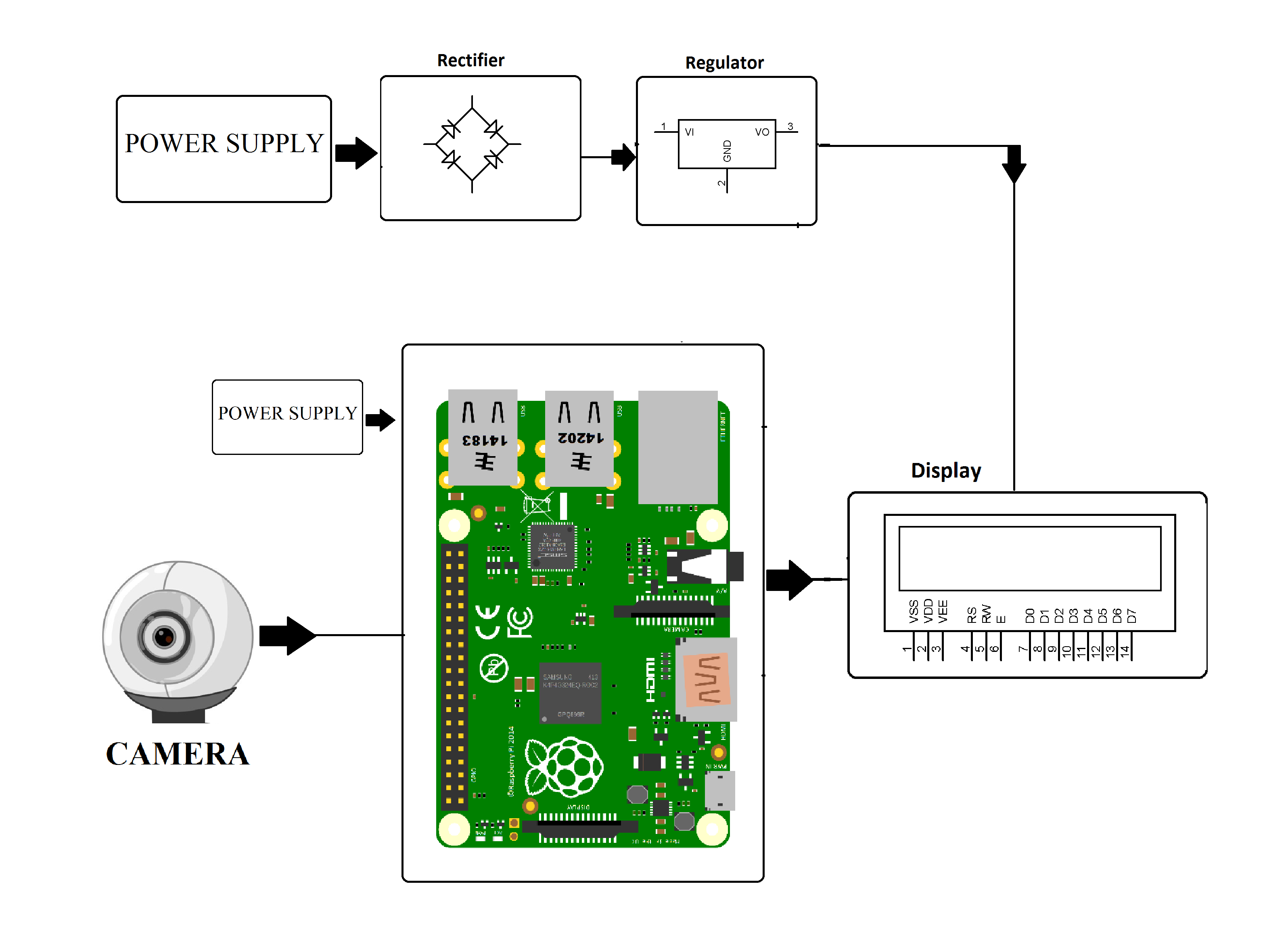License Plate Recognition
VEHICLE plate detection and recognition appear in vast variety of applications, including travel time estimation, car counting on highways, traffic violations detection, and surveillance applications.
Price : 9000
VEHICLE plate detection and recognition appear in vast variety of applications, including travel time estimation, car counting on highways, traffic violations detection, and surveillance applications.
Price : 9000
.svg)
Recognizing vehicle number plates is a difficult but much needed system. This is very useful for automating toll booths, automated signal breakers identification and finding out traffic rule breakers.
Here we propose a Raspberry Pi based vehicle number plate recognition system that automatically recognizes vehicle number plates using image processing. The system uses a camera along with LCD display circuit interfaced to a Raspberry pi. The system constantly processes incoming camera footage to detect any trace of number plates. On sensing a number plate in front of the camera, it processes the camera input, extracts the number plate part from the image. Processes the extracted image using OCR and extracts the number plate number from it. The system then displays the extracted number on an LCD display. Thus we put forward a fully functional vehicle number plate recognition system using Raspberry Pi.
INTRODUCTION
Automatic license plate recognition system plays important role in real life applications such as automatic toll collections, traffic law enforcement, parking lot access control, and road traffic monitoring. VLPR system recognizes a vehicle’s plate number from an image by digital camera. It is fulfilled by the combination of a lot of techniques such as image acquisition i.e. capturing the image of real image of plate localizing the license plate character segmentation i.e. locating and identify individual character on the plate, optical character recognition. The recognition problem is generally sub-divided into four parts are Image acquisition i.e. capturing the image of the license plate, Pre-processing the image i.e. localizing the license plate, Character segmentation i.e. locating and identifying the individual symbol image on the plate, Optical character recognition. A guiding parameter in this regard is country-specific traffic norms and structure. This helps to fine tune the system i.e. number of characters in the license plate, text luminance level (relative index i.e. dark text on light background or light text on dark background) etc.
The goal of this section is to elaborate on the methods of finding the vehicles plates location in captured images. Generally a monochrome camera with a synchronous IR projector and a color camera are employed in a multi-purpose industrial ANPR system. The monochrome camera with IR projector is responsible for plate detection during the night or other low illumination conditions. It is worthwhile to note that for the IR projector to be effective the vehicles plates should have been coated with IR reflective materials.
The role of IR projectors is also important in detecting dirty plates even in daylight by taking care of the camera exposure time. IR projector power has a close relation with the camera exposure time and the exposure time plays an important role in the final clarity of the vehicles plates. Since vehicles move swiftly, high values of exposure time lead to blurred images while low exposure time values produce dark images.
Therefore, it is important to tune the output power of IR projector with respect to the exposure time of the monochrome camera. It is also necessary to have an adaptive procedure to fine-tune the exposure time based on the lighting conditions. Modifying the exposure time is performed in an adaptive procedure that gets its feedback from the thickness of plate characters. Having thin characters is a sign of high ambient light. In this case, we must decrease the exposure time.

Finding License Plate Regions
The block diagram of our proposed ANPR system is this system has been tested extensively over one year of operation period in different streets and highways of Tehran, the capital city of Iran. Our efforts and eagerness to have the data sets of other researchers, mentioned in our tests and references, have been unsuccessful, as of now. Thus, to perform valid and fair comparisons, we have collected huge and highly inclusive data sets ourselves. As a matter of fact, we can claim that our test-bed (based on our data sets) is the most difficult and comprehensive one presented.
Steps: 1. A sliding window is moved all over the binarized image. it is a sample input image to this step. The size of the sliding window in any region is chosen to be two times larger than the vehicle plate size in that region. We use (2) and (3) to calculate the window size at this step.
2. Connected Component Algorithm is applied to the window of step 1.
3. The components with heights and widths of a plate character are chosen and the rest of them are discarded.
4. RANSAC is utilized to determine the best line that represents the given data. This line should have two main properties: first, it should cross more than k character candidates with specific space between them, and next, it should have a reasonable slope. The limiting slope should be set based on the camera view. In this paper, the limiting numbers for crossing characters in Iranian plates and slope are found experimentally as 5 components and 20 degrees respectively.